AI recruitment is projected to reach a market value of 942.3 million dollars by the year 2030.1 Artificial intelligence and automation will continue to make a huge difference in how talent is acquired across all industries.
Although it’s important for companies to adopt new recruitment tools, there is still a need to incorporate personal connections. This article will delve into methods for successfully balancing automation with the human touch.
Automation and Recruitment Technologies
Automation in recruitment refers to using technology to streamline and optimize the hiring process. These technologies are designed to reduce manual administrative tasks and improve overall efficiency. They leverage advanced tools like artificial intelligence, machine learning, and sophisticated algorithms to transform traditional hiring practices.
For companies looking to fill open roles, automation is a powerful approach to managing talent acquisition. Recruitment experts can focus on high-value activities like candidate relationship building and strategic workforce planning rather than time-consuming administrative tasks. Some examples of these technologies that many businesses use are as follows:
1. Applicant Tracking Systems (ATS)
An Applicant Tracking System is a software platform that can manage an entire recruitment lifecycle. These systems allow companies to do multiple tasks with less effort than usual:
- Post job openings
- Collect and organize candidate applications
- Track applicant progress
- Collaborate with hiring teams
An ATS typically stores candidate information in a centralized database. It also enables keyword searching, which helps recruiters quickly identify qualified candidates. Modern ATS platforms can integrate with job boards, career sites, and other recruitment channels. This creates a seamless workflow that improves overall hiring efficiency.
2. AI-Powered Resume Screening Tools
These tools use advanced machine learning algorithms to evaluate and rank candidates based on their resumes.
These intelligent systems can:
- Quickly analyze hundreds or thousands of applications
- Identify top candidates based on their skills and qualifications
- Use natural language processing to understand contexts and nuances in candidate documents
This can make screening more objective while speeding up the process.
Read more: Smart Hiring: How to Use AI to Get the Best Candidate
3. Chatbots for Candidate Engagement
Recruitment chatbots are AI-driven conversational interfaces designed to interact with job candidates. These virtual assistants can perform different functions, such as:
- Answering frequently asked questions (FAQs)
- Scheduling interview slots
- Collecting initial candidate information
Chatbots tend to operate 24/7, allowing candidates to receive more immediate responses. Moreover, this tool can be programmed to handle different topics and languages. This makes it easier for you to engage and respond to more potential employees.
Benefits of Automation
The use of automation in recruiting is driven by the value companies gain from its implementations. Some of these advantages are:
- Increased process efficiency: Automation allows businesses to process more candidates in less time. The latest technologies can also handle multiple recruitment tasks.
- Improved data-driven decisions: Data enables hiring managers to make objective and precise candidate selections. These tools evaluate based on objective criteria and qualifications, steering recruiters away from unconscious human biases.
- Reduced overall costs: Time-consuming processes like initial screening and candidate communication can be automated. Despite the cost of initial investment, these advanced tools can yield long-term financial savings and benefits.
Limitations of Recruitment Technologies
Integrating AI and automation enhances operational efficiency but also has specific limitations. These are some limitations you should know:
1. Possible algorithmic bias
Recruitment technologies can amplify existing biases in the hiring processes. Since algorithms are trained on historical data, they can perpetuate societal biases. You may overlook exceptional candidates simply because they don’t perfectly match the predefined criteria fed into the automation tools.
2. Poor candidate engagement
Automated technologies can generate an impersonal candidate experience that lacks genuine human connection. Despite their efficiency, tools lack empathy and emotional intelligence, which is essential when building connections. This impersonal approach can lead to decreased candidate satisfaction and potential talent loss.
3. Limited insights into candidate motivations
Screening tools excel at analyzing quantifiable data. However, they struggle to comprehend the qualitative aspects of candidate potential. These systems find it challenging to assess human elements like passion, motivation, and cultural fit. You may miss out on exceptional candidates who don’t have the best credentials on paper, but possess top-tier potential.
5 Strategies for Balancing AI and Human Touch
While automation offers efficiency and scalability, the human element ensures empathy and connection. Together, they create a recruitment experience that’s both seamless and personal. The following strategies will help you strike the perfect balance.
1. Provide human engagement for qualified candidates
It’s ideal for your company to create a multilayered communication approach. For example, use automation to handle routine inquiries. Then, reserve personalized interaction for the most promising candidates.
- Try using filtering tools that automatically identify top-tier candidates based on predetermined qualifications.
- Once candidates reach a certain level of compatibility, they transition from automated communication to direct human engagement.
For instance, AI-powered tools can manage initial application screening, basic information gathering, and standard questionnaire responses.
Meanwhile, your recruitment team can contact chosen candidates to discuss their values, skills, and aspirations.
Read more: The Metrics That Matter: How to Measure Success in Recruitment
2. Give the option to connect with people
Given the potential limitations of automated systems, processes should always provide candidates with clear and accessible pathways to connect with hiring managers. No matter which stage of the recruitment cycle they are in, it’s important to give candidates the option to reach out to your professionals for additional support.
- This may be done by including contact options or live chat features on your website.
- You can provide email addresses or phone numbers to candidates with more complex inquiries.
Ensure that candidates never feel isolated. Offer multiple communication channels and make human interaction readily available. This will demonstrate your commitment to the candidate experience.
3. Fuel personalization with gathered data
In fact, you can use technology to get even more personal.
Automated recruitment technologies are powerful tools for gathering data. They can analyze big data sets and generate insights that can help personalize candidate experiences. This usually includes interaction histories, application details, and engagement patterns.
Some companies think personalization simply means inserting candidate names into emails. Instead, a truly tailored communication journey is planned from the beginning until the end. For example, data insights may reveal a candidate’s preferred communication times and interests. Use these to craft more meaningful and targeted interactions with high-potential employees.
4. Conduct segmented communication
Recognize candidates’ unique needs and preferences based on the roles they’re applying for. Develop communication strategies that segment candidates based on criteria such as:
- Career level
- Industry expertise
- Geographic location
- Specific skill sets
Although you don’t need to consider all the listed segmentation examples, do put effort into knowing your target candidates. Focus automated messages and personalized engagements on what can catch their interest. Avoid generic emails and messages to ensure you stand out from the competition.
5. Schedule regular human touchpoints
Despite the efficiency of automation, human interaction remains crucial in building meaningful professional relationships. So, to effectively hire the right fit, you need to be intentional in designing recruitment processes. Incorporate consistent human touchpoints throughout the candidate journey. Balance automation processes with actual candidate interactions.
Ensuring candidates have meaningful interactions throughout their candidate experience demonstrates your organization’s commitment to building a mutually beneficial employer-employee relationship.
These touchpoints may range from initial phone screenings to mid-process check-ins. It may be possible to offer detailed feedback sessions and updates on their current standing throughout the recruitment cycle.
Recruitment professionals and employers can also assess nuanced candidate qualities that AI tools might miss. This includes:
- Soft skills
- Communication skills
- Cultural adaptability
Read more: How Skills-Based Hiring is Transforming Talent Acquisition
Modernize your strategies with Hughes Recruiting & Consulting.
Driven by our desire to help companies succeed, we at Hughes offer tried-and-tested solutions that can ensure your business’s success.
With us as your partner, you can easily transform challenges into recruitment opportunities. Learn about how our tailored services can help improve your hiring processes. Contact us today!
Reference
- Dhapte, Aarti. “AI Recruitment Market Overview.” Market Research Future, Dec. 2024, www.marketresearchfuture.com/reports/ai-recruitment-market-8289.


























